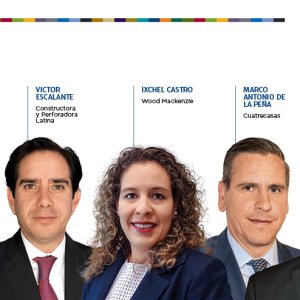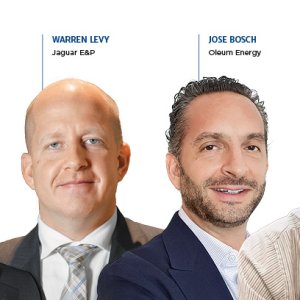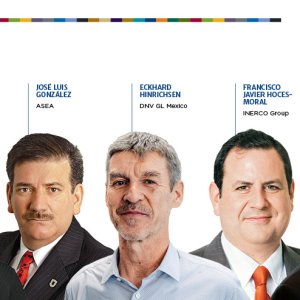
Define Advantages to Compete Internationally
The leaders of Mexico’s aero clusters are also businessmen, heading up internationally successful companies Safran Group, Metal Finishing Co. and TECMAQ in Mexico. This experience drove them to represent the industry’s individual needs in the search for individual cluster realization and international integration.
“It’s undeniable that we compete to attract companies,” said René Espinosa, President of Chihuahua Aerocluster at Mexico Aerospace Forum 2016 at the Sheraton Maria Isabel on Wednesday. “This does not mean that each individual cluster does not have its advantages.”
If a company’s criteria is volume of exports, then it would choose Queretaro, but in number of companies in a certain region Baja California is leagues ahead. If a company is interested in who leads in number of employees, then FEMIA would guide it to Chihuahua. But Carlos Ramírez, President of Monterrery Aerocluster, disagreed that it is clear what each cluster’s competencies are. “The industry needs to more clearly define its competitive advantages by region to effectively compete with emerging forces in Europe and North Africa, for example.”
“In a global market that represents US$450 billion, Mexico’s participation is currently infantile,” said Luis Lizcano, Director General of FEMIA. The Federation leads the industry and gathers companies’ needs together to grant the most common wishes. “We are not fourth in the world by chance,” said Claude Gobenceaux, President of AeroClúster de Querétaro. Mexico’s success as an aerospace hub is because the government and authorities listen to what companies need to grow. But now the country calls for more academia and education and for companies that are already in Mexico to support newcomers.
Engineering and design advances, born from partnerships with the universities in Chihuahua, have led to the integration of 100 percent of aerospace companies into the cluster, according to Espinosa. His Chihuahua cluster employs 18,000 people in the industry. Having bridged the gaps between classroom knowledge and real industry experience, the cluster has led academia to register several patents and for the state to be the leading global producer of harnesses. “Safran and Honeywell alike have opened aerospace engineering centers in Chihuahua,” said Espinosa.
The success story in Queretaro is its starring company Bombardier, which arrived hand-in-hand with Safran to the state. The five (now close to being six, according to Gobenceaux) Bombardier plants have fed enough SMEs to hire 8,500 people in Queretaro’s aerospace industry. The youngest cluster is responsible for about 50 percent of funding of industry innovation, into which the country has established limited roots but is keen to venture further.
In contrast, MROs flourish in Nuevo Leon, catering to clients in the Del Norte International Airport. For local industry, adapting the manufacturing sector’s technology to convert it to aerospace production are Monterrey Aerocluster’s priority, according to Ramírez.
Each state is responsible for promoting its advantages, though the uniting body FEMIA asks: how can the sectors collaborate to reach greater levels of international integration? Competition between states’ egos is unavoidable. But until more companies participate in FEMIA, to surpass the 60 companies represented by the Federation, the country cannot compete as a united front. “If only 20 percent of the sector’s companies are represented by FEMIA, how can external entities know what services are truly available here?” said Gobenceaux. Each cluster and representative of the industry have to participate in every council and meeting to change this, added Ramirez.
The Forum’s running theme of how can Tier 1s and OEMs sponsor nascent companies prevailed. While the federal government must play a greater role in the sector’s productivity, when Queretaro faced problems in the aerospace sector relating to customs, it was the government of Queretaro that realized that something must be done and reacted, according to Gobenceaux. “Five percent of aerospace sales in the world can be contributed to Mexico, though that could be multiplied sixfold if the government increased its efforts.”
Espinosa’s inspiring message stood out from the panel, titled Cluster: Collaboration vs Competition: “The largest aero cluster is not Queretaro. It is not Monterey nor Baja California nor Chihuahua. It is Mexico.”














